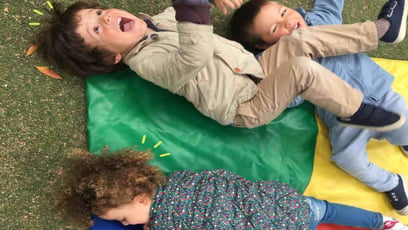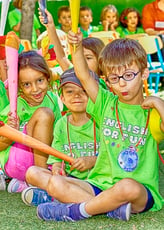At English for Fun, our preschool program serves, and guides children from ages 1 to 5. While they are at school, their learning takes place only in the English language. In addition to encouraging the acquisition of English, the school has also taken the important responsibility to provide experiences to help our students gain the basic skills for them to develop in all of the learning aspects; this would be in the cognitive, emotional, social, physical, etc., fields.In the first few years of life, the brain is constantly growing and making new connections. The body is learning to control its muscles. Language comprehension, including verbal language skills, develops at a rapid pace. Young children begin to practice the their social skills, which are very important as these skills are fundamental in creating interactions with other people for the rest of their lives.Since the English for Fun preschool program began, we have taken many turns, and have changed several things in order to create an environment that is most conducive to creating well-rounded, curious learners. Since then, we have adapted the Reggio-Emilia approach. It has served as a grand inspiration for our practice at our school, and it is known worldwide for its innovative practices.The roots of the Reggio-Emilia Approach can be found in Italy, in a northern town called Reggio Emilia. It came to be after World War II, when the little community merged together with both a goal and passion to create schools for the young children within the region. Together, they built schools and crafted an educational pedagogy that is based on the child as the protagonist of his own learning. However, none of this would have been created without the guidance of Loris Malaguzzi, who was then a local educator of the little town, and who we now know as the father of the Reggio- Emilia Approach.As teachers, they had a very powerful image of children—strong, capable, intelligent, competent, expressive, curious, social, emotional, and hunters of experience that will help them learn. The programs that they created were based on creativity, problem solving, and expression. They (the teachers) did not tell the students what they were going to learn; but instead, they observed, listened to the children. They asked them carefully selected questions, and learn along with their students. They extend what the children have learned by introducing materials, related information, creating conversations that will lead the students to new discovers, investigations and queries.Our preschool has fallen in love with this method. It is because of this inspirational movement, our preschool staff members have been given the unique opportunity to incorporate the approach our school. Although we focus on learning the English language, we believe that this approach is fundamental in the proper development of our children. Our students learn from important skills through play, having fun, creating experiences, but working hard throughout the day. During these experiences, interactions or any activity, their teachers serve as guides, speaking to them in English—talking about their actions, things within their classroom, feelings, colors, etc. This way, the children’s English acquisition is reinforced and associated with fun, excitement, and the real world. We aim for each child to be a part of a learning community, which is gaining a new language in an environment dedicated to helping children learn in a meaningful way.


